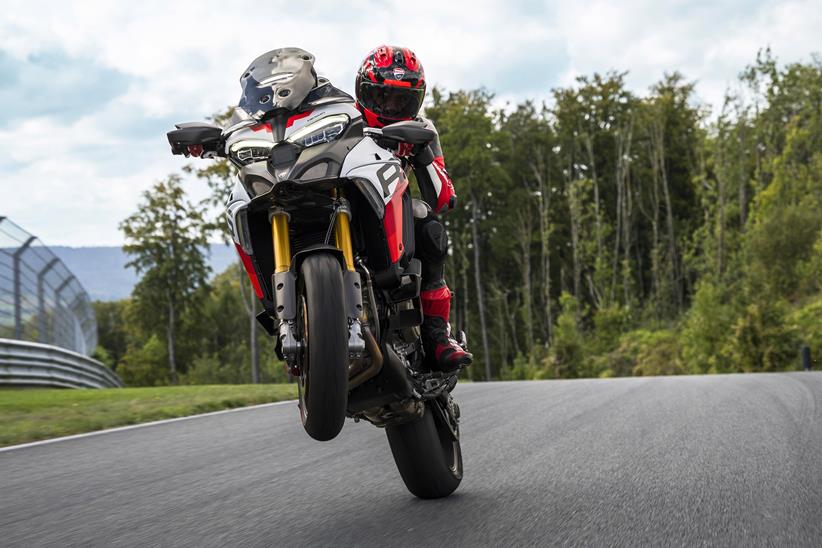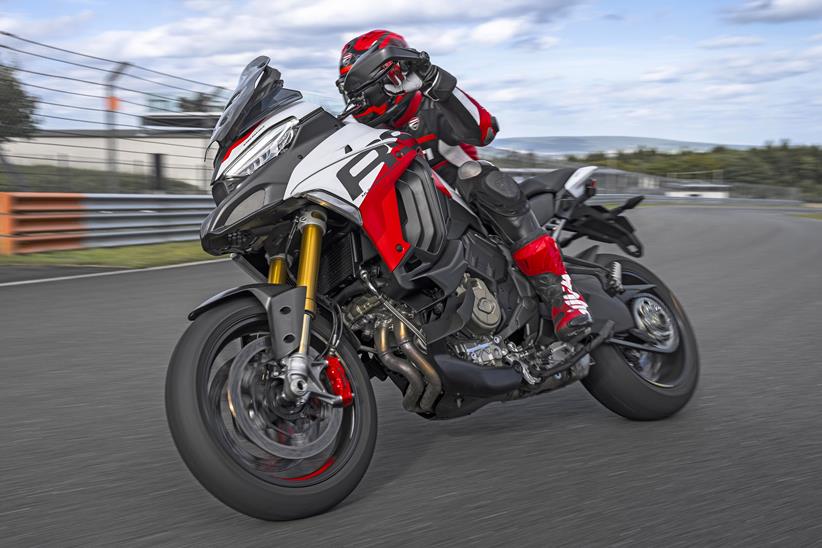Not RS-ing around: Ducati load Panigale engine into Multistrada for numbered RS model
Ducati have fired shots in the battle for hyper-adventure supremacy by whipping the cover off a new model called the Multistrada V4 RS. This latest version of the Multi is the first to use a Panigale V4 superbike engine and is dripping in top-drawer componentry and weight saving upgrades.
Taking a leaf from BMW’s book, Ducati have taken the RS suffix from parent company Audi’s hottest car models for the first time, similar to BMW’s adoption of the M badge for bikes in 2021.
The biggest change, though, is the use of the 1103cc Desmosedici Stradale engine (complete with the dry clutch set-up from the SP2 specials) albeit limited to 13,500rpm and a claimed 180hp (177.5bhp).
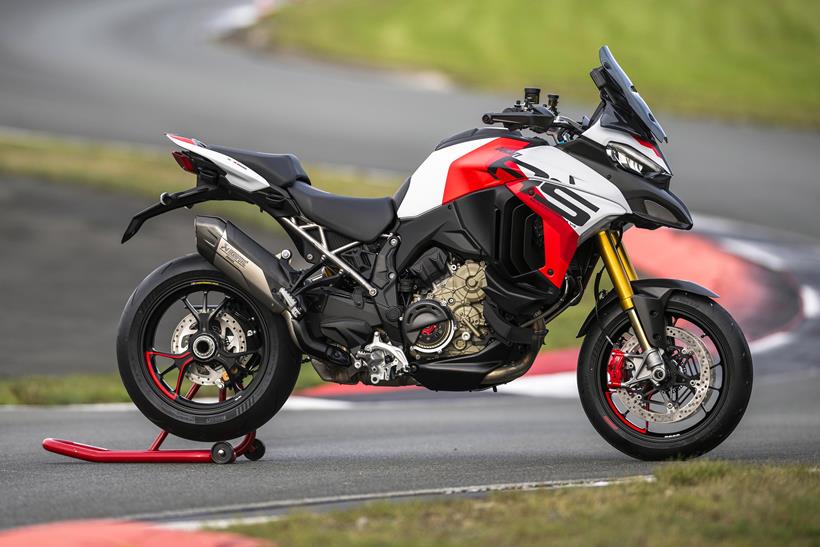
Ducati say they’ve worked on a ‘fluid and regular power delivery curve at low revs’ for the RS, meaning there should be plenty of grunt further down the rev range. But to add a belt to these braces, they’ve also shortened the final drive gearing for maximum acceleration at real-world speeds – this is a road bike after all.
To make sure you hear it coming, the RS also gets the air filter from a Panigale V4R and an Akrapovic exhaust end can developed specifically for the bike.
Can you handle it?
The engine acts as a stressed member in a monocoque aluminium frame, but the head angle has been tweaked to a sportier 25.75° (compared to 24.5° on the S and Rally model). A titanium subframe, Öhlins suspension and 17” forged aluminium Marchesini wheels (shod with Pirelli Diablo Rosso IV Corsa tyres) complete the chassis.
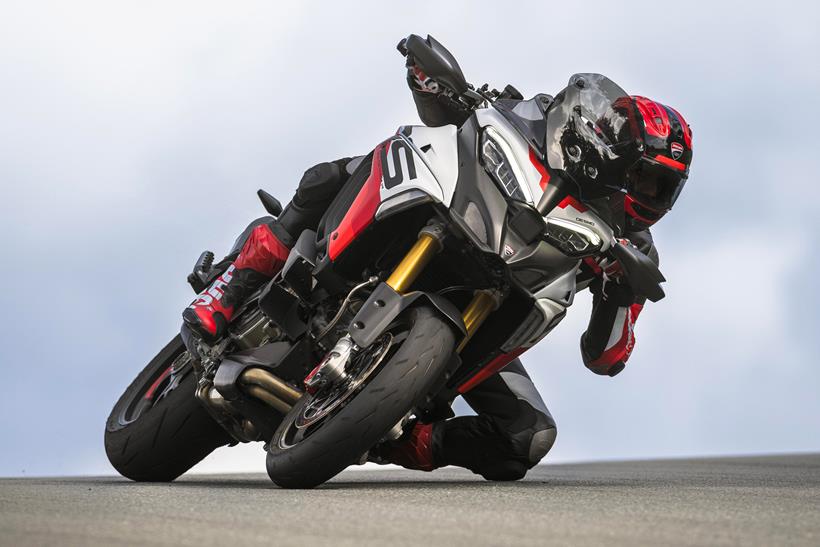
Ducati say changes to the subframe, wheels and battery alone add up to a weight saving of 8.2kg over the standard bike – and there are other titanium and carbon fibre upgrades everywhere you look – but the overall weight is yet to be confirmed.
Combine this with the Öhlins Smart EC 2.0 suspension and this is likely to be the sweetest handling Multi V4 to date. It uses the latest ‘event based’ tech from the Panigale and Streetfighter V4S that automatically adjusts in response to individual riding style.
The hydraulic braking pressure is also increased in the riding modes with higher damping levels, meaning the Brembo Stylema monobloc calipers bite harder onto their twin 330mm discs (single 265mm at the rear). The pads have also been upgraded to match those on the Panigale. The system is all overlooked by the Bosch-Brembo 10.3ME Cornering ABS system, too.
Gizmos, gadgets and doodads
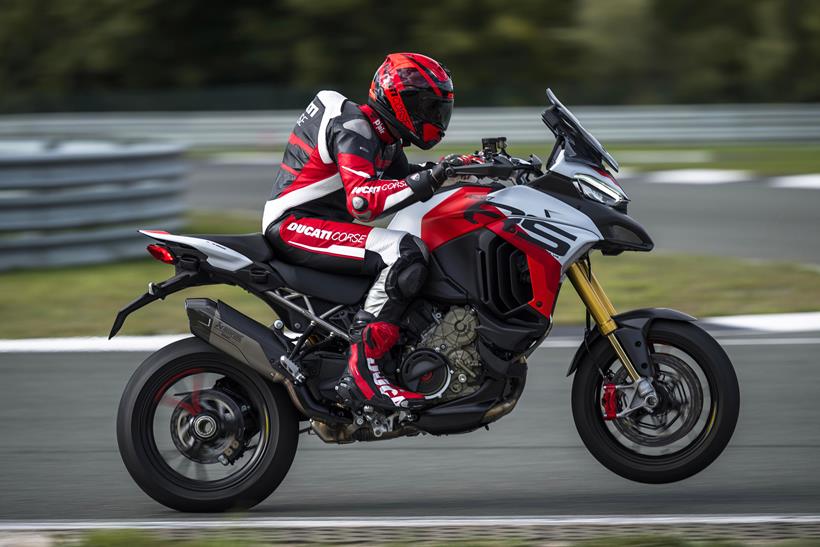
No top-spec Ducati would be complete without a smorgasbord of electronic wizardry and the Multistrada RS is no exception. As well as the trick brakes and suspension, you get a wordsearch of acronyms to improve rider experience or performance.
Adaptive Cruise Control (ACC) and Blind Spot Detection (BSD) are provided by the radar system, while the Bosch inertial platform provides four power podes (Full, High, Medium, Low). You get Ducati Traction Control (DTC), Ducati Wheelie Control (DWC), Engine Brake Control (EBC) and Ducati Quick Shift (DQS) up and down. All of this is integrated into the four Riding Modes (Race, Sport, Touring and Urban) so you get gear-by-gear power and throttle settings, selected through the 6.5” TFT dash.
The Ducati Multistrada V4 RS will come in just one colour – white with red accents – complete with plenty of RS badging. It will be built in a numbered series, although it’s unclear how many will be made. All of that bling and performance doesn’t come cheap either, the RS costs £31,995 – £5400 more than the current Multistrada V4 Pikes Peak which costs £26,595.
Battle of the hyper-tourers

We already saw Peter Hickman riding a prototype BMW M1000XR at the Isle of Man and the German firm confirmed that it will be made but we’re yet to get any official spec or data on the production version.
Ducati have shown their hand first, now we just need BMW to do likewise and we can put them head-to-head in a group test.
